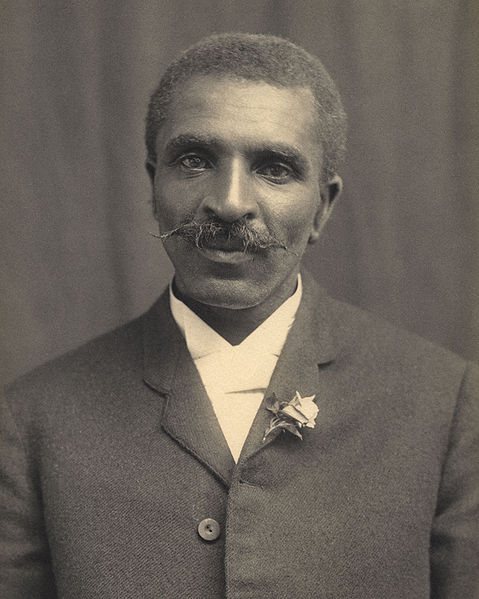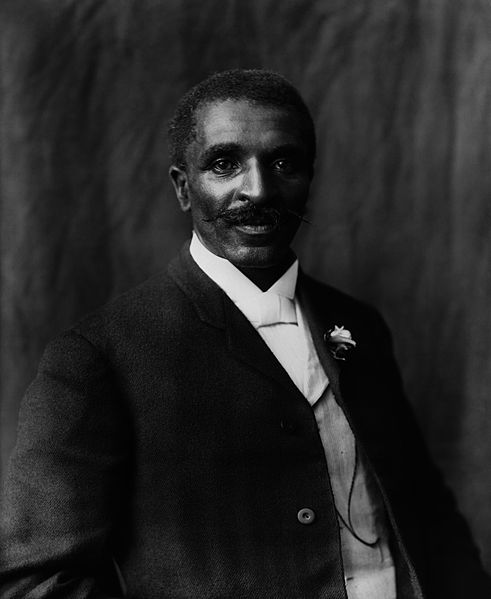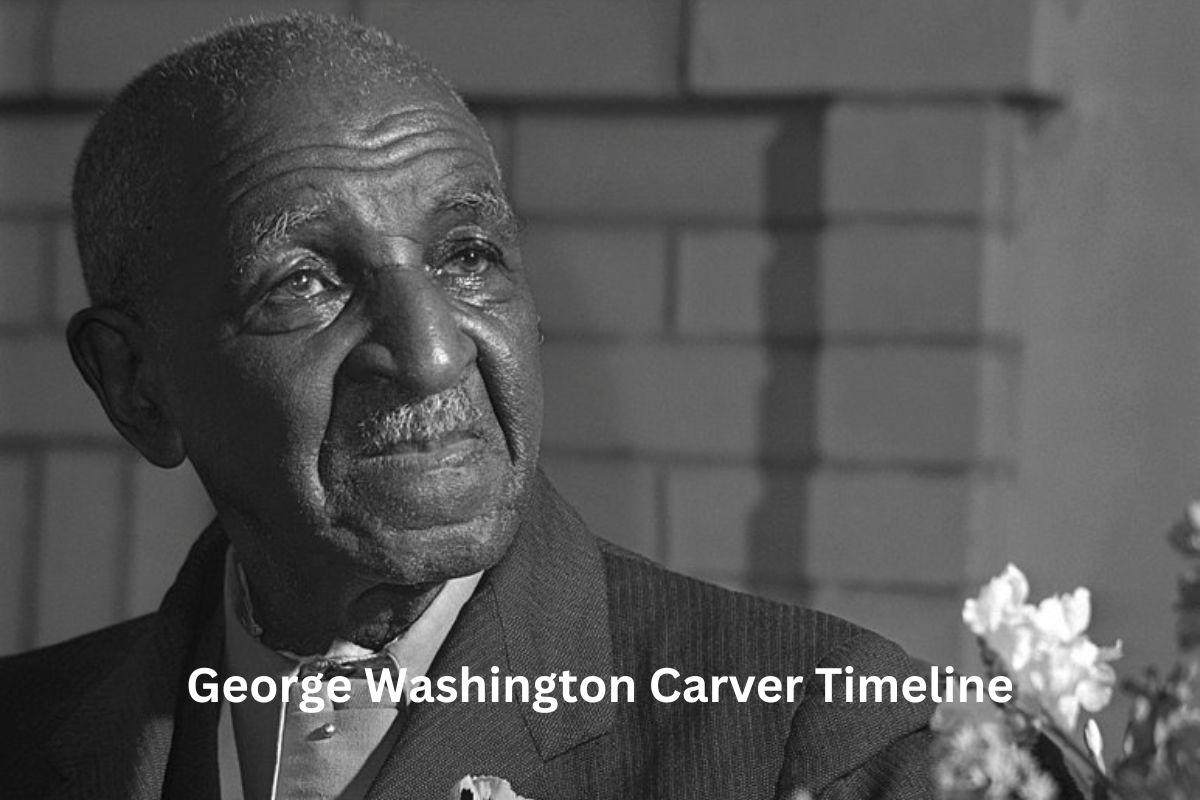George Washington Carver (approx. 1864-1943) was an American scientist, educator, and agricultural researcher who made significant contributions to the fields of agricultural science and sustainable farming practices.
Born into slavery in Missouri, Carver overcame immense challenges to become one of the most prominent African American scientists of his time.
He is best known for his research on alternative crops, particularly peanuts and sweet potatoes, and his innovative approach to agricultural techniques.
Carver’s work aimed to improve the livelihoods of Southern farmers, promote sustainable farming methods, and enhance nutrition and economic opportunities for marginalized communities.
His pioneering efforts and dedication to education continue to inspire generations and solidify his legacy as a trailblazer in the fields of science and social progress.
Timeline of George Washington Carver
| Year | Event |
|---|---|
| 1864 (approx.) | Carver is born into slavery in Diamond Grove, Missouri |
| 1891 | Carver enrolls at Simpson College in Iowa |
| 1894 | Carver receives his Bachelor of Science degree from Iowa State |
| 1897 | Carver joins the faculty at Tuskegee Institute |
| 1904 | Carver publishes “How to Grow the Peanut and 105 Ways of Preparing it for Human Consumption” |
| 1916 | Carver publishes “How to Grow the Sweet Potato and 105 Ways of Preparing it for Human Consumption” |
| 1921 | Carver testifies before the U.S. House of Representatives Ways and Means Committee |
| 1923 | Carver receives the Spingarn Medal |
| 1943 | Carver donates his life savings and entire estate to establish the George Washington Carver Foundation |
| 1943 | Carver passes away on January 5 |
Timeline of George Washington Carver
1864 (approx.) – Carver is born into slavery in Diamond Grove, Missouri
George Washington Carver was born into slavery around 1864 in Diamond Grove, Missouri. The exact date of his birth is unknown. He was born to enslaved parents, Mary and Giles Carver.
During this time, slavery was still prevalent in the United States, and Carver’s early life was shaped by the harsh conditions and limited opportunities faced by African Americans.

1891 – Carver enrolls at Simpson College in Iowa
In 1891, George Washington Carver enrolled at Simpson College in Indianola, Iowa. He pursued his education with a focus on art and music.
Also Read: Facts About George Washington Carver
Carver’s enrollment at Simpson College marked an important milestone in his journey to acquire knowledge and further his intellectual development. However, his interests soon shifted towards science and agriculture.
1894 – Carver receives his Bachelor of Science degree from Iowa State
In 1894, Carver completed his studies at Iowa State Agricultural College (now Iowa State University). He earned a Bachelor of Science degree, making him the first African American student to achieve this at the institution.
Also Read: Accomplishments of George Washington Carver
Carver’s studies at Iowa State laid the foundation for his future work in agricultural research and the pursuit of innovative techniques to improve farming practices.
1897 – Carver joins the faculty at Tuskegee Institute
In 1897, George Washington Carver accepted an invitation from Booker T. Washington to join the faculty at Tuskegee Institute (now Tuskegee University) in Alabama.
Carver became the head of the Agriculture Department, where he made significant contributions to agricultural research and education.
During his tenure at Tuskegee, Carver focused on promoting sustainable farming practices and improving the lives of Southern African American farmers through education and innovation.
1904 – Carver publishes “How to Grow the Peanut and 105 Ways of Preparing it for Human Consumption”
In 1904, Carver published a bulletin titled “How to Grow the Peanut and 105 Ways of Preparing it for Human Consumption.” This publication showcased the versatility and nutritional value of peanuts, introducing them as a valuable crop for farmers.
Carver’s research and promotion of peanuts helped to diversify Southern agriculture and provided farmers with an alternative to cotton, which had been the primary cash crop in the region.

1916 – Carver publishes “How to Grow the Sweet Potato and 105 Ways of Preparing it for Human Consumption”
In 1916, Carver published another bulletin titled “How to Grow the Sweet Potato and 105 Ways of Preparing it for Human Consumption.” This publication highlighted the nutritional benefits and numerous uses of sweet potatoes.
His research on sweet potatoes helped to popularize their cultivation and consumption, promoting their value as a nutritious and versatile crop.
1921 – Carver testifies before the U.S. House of Representatives Ways and Means Committee
In 1921, George Washington Carver testified before the U.S. House of Representatives Ways and Means Committee. He advocated for a tariff on imported peanuts, aiming to protect Southern farmers from competition and ensure their economic stability.
Carver’s testimony showcased his expertise in agricultural science and his commitment to the well-being of Southern farmers, particularly African American farmers who faced significant challenges in the agricultural sector.
1923 – Carver receives the Spingarn Medal
In 1923, George Washington Carver was honored with the Spingarn Medal, awarded annually by the National Association for the Advancement of Colored People (NAACP) for outstanding achievement by an African American.
The award recognized Carver’s remarkable contributions to agricultural science, his commitment to improving the lives of Southern farmers, and his dedication to education. The Spingarn Medal acknowledged Carver as a trailblazer and a symbol of African American achievement.
1943 – Carver donates his life savings and entire estate to establish the George Washington Carver Foundation
In 1943, towards the end of his life, George Washington Carver made a significant philanthropic gesture by donating his life savings and his entire estate to establish the George Washington Carver Foundation at Tuskegee Institute.
The foundation was established to support scientific research, education, and scholarships. Carver’s generous contribution ensured the continuation of his work and legacy, empowering future generations of scientists and educators to further advance agricultural research and education.
1943 – Carver passes away on January 5
On January 5, 1943, George Washington Carver passed away at the approximate age of 78. His death marked the end of a remarkable life devoted to scientific research, education, and the advancement of agriculture.
Carver’s legacy as a pioneer, innovator, and advocate for sustainable farming practices and racial equality continues to inspire and influence individuals worldwide.
